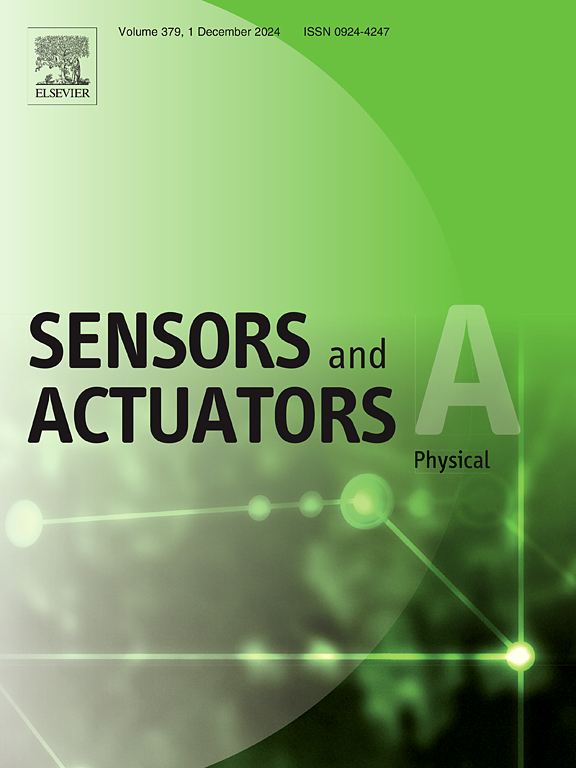扭曲和盘绕聚合物致动器的高循环性能
IF 4.1
3区 工程技术
Q2 ENGINEERING, ELECTRICAL & ELECTRONIC
引用次数: 0
摘要
扭曲盘绕聚合物致动器(TCPA)又称盘绕人工肌肉,因其具有较大的收缩致动和做功能力,在软机器人领域越来越受欢迎。然而,虽然之前有人声称 TCPA 的冲程在数千次循环后仍保持稳定,但其绝对长度变化尚未得到严格研究。在这里,我们构建了一个等压循环装置,该装置依靠水浸快速加热和冷却。这样就能在 56 小时内进行 10K 次循环测试,肌肉温度在 15 °C 和 75 °C 之间变化,每次循环 20 秒。令人惊讶的是,虽然冲程通常在整个 10k 周期内保持不变,但最终的肌肉加载长度却表现出蠕变行为的所有几何可能性,因为它可以保持不变、拉长(蠕变)或在测试结束时收缩(反向蠕变)。根据大量实验,我们得出了一条经验法则,它捕捉到了观察到的最终肌肉长度变化 ΔL、冲程 α 和被动应变 ε0 之间的关系:ε0+α=ΔL。利用这一关系,只需前 100 个循环就能预测肌肉的最终长度变化。通过分别在有保护层和无保护层的水中进行测试,我们发现在水中不膨胀的聚偏二氟乙烯(PVDF)和会膨胀的尼龙都遵循了这一经验法则。这些结果为预测数千次循环的致动提供了实用的设计指南。本文章由计算机程序翻译,如有差异,请以英文原文为准。
High cycle performance of twisted and coiled polymer actuators
Twisted and coiled polymer actuators (TCPA), also known as coiled artificial muscles, are gaining popularity in soft robotics due to their large contractile actuation and work capacity. However, while it has been previously claimed that the stroke of TCPA remains stable after thousands of cycles, their absolute length change has not been rigorously studied. Here, we constructed an isobaric cycling setup that relies on fast heating and cooling by water immersion. This enables testing for 10k cycles in a duration of 56 hours, where the muscle temperature is varied between 15 °C and 75 °C at a rate of 20 seconds per cycle. Surprisingly, while the stroke usually remains unchanged for the entire 10k cycles as previously claimed, the final muscle loaded length exhibits all the geometrical possibilities of creep behavior as it can remain unchanged, elongate (creep), or contract (reverse creep) at the end of the test. Based on a wide range of experiments, we derived an empirical law which captures the observed relationship between the final muscle length change , the stroke , and the passive strain : . Using this relation, the final length change of the muscle can be predicted from the first 100 cycles only. We show that polyvinylidene fluoride (PVDF), which does not swell in water, and nylon, which swells, follow this empirical law by testing in water with and without a protective coating, respectively. These results offer practical design guidelines for predictive actuation over thousands of cycles.
求助全文
通过发布文献求助,成功后即可免费获取论文全文。
去求助
来源期刊

Sensors and Actuators A-physical
工程技术-工程:电子与电气
CiteScore
8.10
自引率
6.50%
发文量
630
审稿时长
49 days
期刊介绍:
Sensors and Actuators A: Physical brings together multidisciplinary interests in one journal entirely devoted to disseminating information on all aspects of research and development of solid-state devices for transducing physical signals. Sensors and Actuators A: Physical regularly publishes original papers, letters to the Editors and from time to time invited review articles within the following device areas:
• Fundamentals and Physics, such as: classification of effects, physical effects, measurement theory, modelling of sensors, measurement standards, measurement errors, units and constants, time and frequency measurement. Modeling papers should bring new modeling techniques to the field and be supported by experimental results.
• Materials and their Processing, such as: piezoelectric materials, polymers, metal oxides, III-V and II-VI semiconductors, thick and thin films, optical glass fibres, amorphous, polycrystalline and monocrystalline silicon.
• Optoelectronic sensors, such as: photovoltaic diodes, photoconductors, photodiodes, phototransistors, positron-sensitive photodetectors, optoisolators, photodiode arrays, charge-coupled devices, light-emitting diodes, injection lasers and liquid-crystal displays.
• Mechanical sensors, such as: metallic, thin-film and semiconductor strain gauges, diffused silicon pressure sensors, silicon accelerometers, solid-state displacement transducers, piezo junction devices, piezoelectric field-effect transducers (PiFETs), tunnel-diode strain sensors, surface acoustic wave devices, silicon micromechanical switches, solid-state flow meters and electronic flow controllers.
Etc...
 求助内容:
求助内容: 应助结果提醒方式:
应助结果提醒方式:


